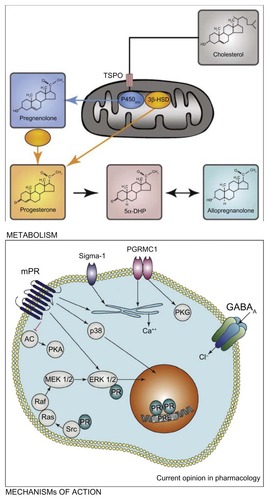Figures & data
Table 1 Levels of prevention
Table 2 Clinically identifiable risk factors for spontaneous preterm birth
Table 3 Frequency of women with short cervix
Figure 1 Cholesterol is converted to pregnenolone by cytochrome P450scc inside steroidogenic mitochondria. The transport of cholesterol across the mitochondrial membranes is a limiting step, and it involves the transport protein (TSPO). Ligands of TSPO can stimulate the passage of cholesterol into the mitochondria and, as a consequence, the synthesis of pregnenolone. The conversion of pregnenolone to progesterone by different isoforms of the 3β-hydroxysteroid dehydrogenase (3β-HSD) also takes place inside the mitochondria or within the cytoplasm.
Abbreviation: 5αDHP, 5α dihydroprogesterone.
